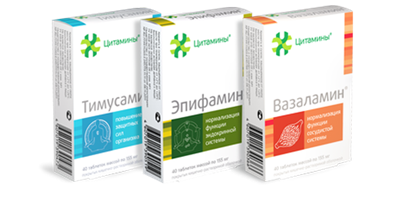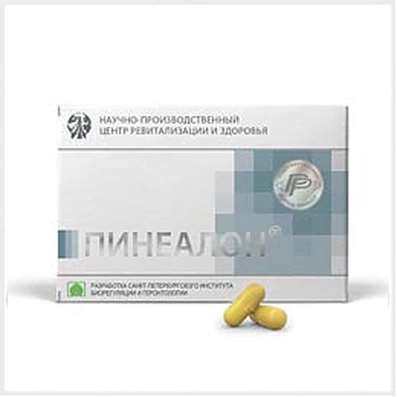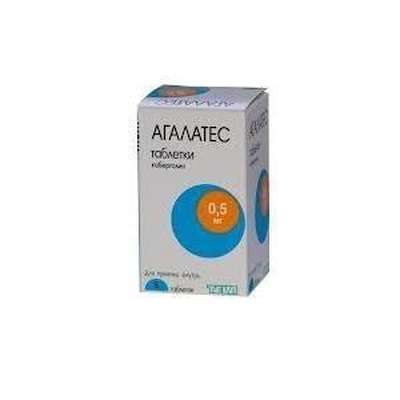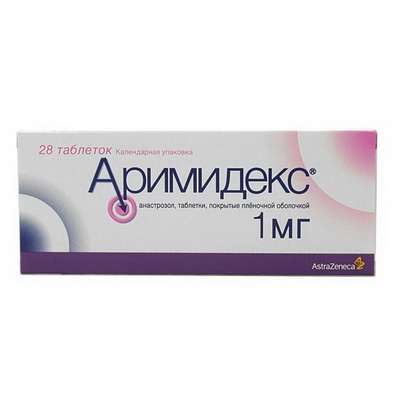Instruction for use: Frontin
I want this, give me price
Trade name of the drug – Frontin
Active substance: Alprazolam (Alprazolamum)
Dosage Form: Tablets
Composition:
Alprazolam 1 tablet contains 0.25, 0.5 or 1 mg; in cans of 30 or 100 pcs., in box 1 of the bank.
Pharmacotherapeutic group:
Anxiolytic (tranquilizer)
ATX Code
N05BA12 Alprazolam
The nosological classification (ICD-10)
F32 Depressive episode: adynamic subdepression; Astheno-adynamic state subdepressive; Asthenic-depressive disorder; Asthenic-depressive state; Asthenic-depressive disorder; Asthenic-depressive state; Major depressive disorder; Sluggish-apathetic depression with inhibition; Double depression; depressive pseudodementia; Depressive disorder; Depressed mood disorder; Depressive disorder; mood Depressive disorder; the doldrums; Depressive disorders; Depressive syndrome; Depressive syndrome larvirovanny; Depressive syndrome with psychosis; masked Depression; Depression; exhaustion Depression; Depression with symptoms of lethargy within cyclothymia; Depression smiling; involutionary depression; involutionary melancholy; involutional depression; Manic-depressive disorder; masked depression; Melancholic attack; Neurotic depression; Neurotic depression; Shallow depression; Organic depression; Organic depressive syndrome; Simple depression; Simple melancholic syndrome; Psychogenic depression; Reactive depression; Reactive depression is a moderately severe; psychopathological symptoms; Reactive depression; Reactive depression; Recurrent depression; Seasonal depressive syndrome; Senesto-pathic depression; senile depression; Symptomatic depression; somatogenic depression; cyclothymic depression; Exogenous depression; lypothymia; Endogenous depression; The endogenous depressive syndrome.
F41.2 Mixed anxiety and depressive disorder: Depression with anxiety and depressive components; Mixed anxiety-depressive states; Anxious depression; Anxious, depressed mood; Anxiety and depression; Anxiety-depressive syndrome; Anxious-neurotic state.
F41.9 Anxiety disorder, unspecified: Severe anxiety; neurosis-like symptoms; neurosis-like disorder; neurosis-like state; Neurosis with anxiety symptoms; Neurosis with anxiety; Neurotic disorders with anxiety syndrome; The acute situational stress and anxiety; The acute situational stress anxiety; Acute anxiety attack; Depressed mood with anxiety elements; Psychopathy with a predominance of anxiety and worry; Sudden anxiety; Situational Anxiety Disorder; An anxiety condition; Soest; Anxious-delirium;
Disturbingly delusional component; anxiety; Anxiety; anxiety disorder; Anxiety disorders; Anxiety disorders in neurotic and neurosis-like states; Anxiety syndrome; Chronic neurotic anxiety; Sense of anxiety.
F44 Dissociative [conversion] disorders: Dissociative phenomena; Conversion disorder; Conversion symptoms; pseudodementia; Psychogenic psychosis.
F48 Other neurotic disorders: Neurosis; Neurological diseases; Neurotic disorders; Neurotic state; Psychoneurosis; Anxious-neurotic state; Chronic neurotic disorders; Emotional reactive disorder.
F51.0 Insomnia inorganic etiology: Situational insomnia
N94.3 syndrome premenstrual tension: Severe premenstrual syndrome; Menstrual psychosomatic disorder; Menstrual syndrome; premenstrual tension; premenstrual state; Premenstrual period;
Premenstrual syndrome; menstrual syndrome.
R45.0 Nervousness: Internal voltage; Voltage; voltage nervous; tension; nervous disorders; tearfulness; Mental stress; emotional stress; Psycho-emotional tension in stressful situations; The reactions of nervous tension; State voltage; State of tension; Condition of permanent mental stress; stress; The feeling of inner tension; Emotional tension.
R45.1 Restlessness and agitation: Agitation; Anxiety; explosive excitability; The internal excitation; Excitability; Excitation; Excitation sharp; psychomotor excitement; hyperexcitability; motor stimulation; Relief of agitation; jitters; restless; Night concern; The acute stage of schizophrenia with excitement; Acute mental stimulation; paroxysm excitation; overexcitement; erethism; Increased nervous irritability; Increased emotional and cardiac excitability; Increased arousal; hyperphrenia; Psychomotor agitation; Psychomotor agitation; Psychomotor agitation in psychosis; Psychomotor agitation epileptic nature; psychomotor paroxysm; psychomotor seizures; excitation Symptoms; The symptoms of psychomotor agitation; Status agitation; Status anxiety; excitation condition; Status of high concern; Condition of psychomotor agitation; anxiety states; excited states; anxiety states with somatic diseases; feeling of excitation; Feeling restless; Emotional arousal.
R45.3The demoralization and apathy: Apatiko - abulic phenomenon; Apathy; Apatoabulic state; Apatoabulic disorder; Apatoabulic state; Indifference; Lack of initiative; Sluggish state-apathetic; apatic state; Deficit motives and motivations; Lack of initiative; The lack of emotional care and to communicate; The feeling of inferiority; Reduction initiative; Reduction initiatives; Reduced motivation; Reduced initiative .
R45.4 Irritability and anger: tantrum; Anger; Dysphoria; Neurosis with increased irritability; exasperation; Increased irritability; Increased irritability of the nervous system; Irritability; Irritability with nervousness; Irritability with psychotic disorders; The symptoms of irritability.
Pharmacological PropertiesPharmachologic effect
Mode of action - antidepressant, anticonvulsant, anxiolytic, muscle relaxant, sedative.
Interacts with the benzodiazepine receptors, enhances the inhibitory effect of GABA.
Pharmacokinetics
Once inside it absorbed about 80%. Binding to plasma proteins - 70%. Cmax in plasma is reached after 1.7 hours. After a single dose of 0.5 mg the mean Cmax was 7.1 ng / mL. There is a linear relationship between dose and alprazolam concentration in plasma. T1 / 2 - 10-12. H is extensively metabolized in the liver. The major metabolite is an alpha-hydroxy metabolite having biological activity. Write mainly kidneys in an unmodified form - 20%.
Indications for Frontin
Anxiety associated with depression; neuroses with alarming symptoms of various origins; panic disorder, premenstrual syndrome.
Contraindications for Frontin
Hypersensitivity, severe liver or kidney disease, glaucoma, myasthenia gravis, severe respiratory insufficiency, sleep apnea syndrome, pregnancy, breast-feeding, age and 18 years of age (safety application is not installed).
Frontin Dosage and Administration
Inside. The dosage is determined individually and corrected during treatment (gently rises, initially daytime, and then in the evening dose). It is recommended to use the minimum effective dose. Adults, with anxiety: an initial dose - 0.25-0.5 mg 3 times a day, if necessary, increase the dose to 4 mg / day in divided doses; for depression: before going to bed, the initial dose - 0.5 mg 3 times a day, if necessary, increase the dose to 4 mg / day; duration of treatment - 4-12 weeks; in panic disorder: an initial dose - 0.5-1 mg at bedtime or 0.5 mg 3 times a day, for most patients - 4-6 mg / day for 4-12 weeks, in some cases, if necessary, dose increased to 10 mg / day (but not more than 1 mg every 3-4 days) and treatment - up to 8 months. Elderly or debilitated patients: an initial dose - 0.25 mg 2-3 times a day, if necessary dose gradually increased to 0.5-0.75 mg / day.
Side effect of Frontin
From the nervous system and sensory organs: headache, dizziness, drowsiness, impaired memory and motor coordination, fatigue, ataxia, slurred speech, muscle weakness, impaired vision, neurotic reactions, depression, tremors, insomnia, intellectual impairment, confusion, increased intraocular pressure.
From the digestive tract: nausea, vomiting, jaundice, increased liver transaminases.
From the urogenital system: incontinence or urinary retention, disturbance of libido and menstrual cycle.
Other: weight change, dermatitis, various manifestations of the autonomic nervous system; irritability, hostility and intrusive thoughts in patients with posttraumatic disorders at the termination of alprazolam therapy.
Frontin at Pregnancy and breast-feeding
Contraindicated during pregnancy. At the time of treatment should stop breastfeeding.
Cautions when taking the drug Frontin
With extreme caution is used in violation of liver and kidney function, severe depression, suicidal thoughts, panic disorders. To avoid withdrawal (abstinence effects) treatment ceased gradually reducing the dose of not more than 0.5 mg every 3 days. During treatment is not recommended to drive the car or others. Potentially dangerous machinery. At the time of reception lactating women should abandon breastfeeding.
Overdose of Frontin
An overdose of Frontin may be manifested ataxia and drowsiness. In such cases it is necessary to induce vomiting and to gastric lavage. It is important to monitor indicators of central hemodynamics and breathing. Effectively intravenous large amount of liquid. If necessary, carry out artificial respiration, intravenous levarterenola. There is evidence of low efficiency of forced diuresis and hemodialysis.
Interaction
Increasing the concentration of imipramine, desipramine and digoxin in the blood serum. Psychotropic, anticonvulsants, antihistamines and alcohol increase (each) deprimiruyuschie effect. Metabolic clearance of alprazolam reduced while receiving usual therapeutic doses of cimetidine and macrolide antibiotics. When combined with cimetidine, macrolides, nefazodone, fluvoxamine, fluoxetine, propoxyphenyl, sertraline, diltiazem, digoxin, and oral contraceptives should reduce the dose of alprazolam. Incompatible with ketoconazole and other antifungal agents such as azole.
SPECIAL INSTRUCTIONS
With extreme caution is used in violation of the liver and kidneys. When treating patients who are prone to abuse drugs should take into account the increased risk of drug dependence. In order to avoid the syndrome of "cancellation" (abstinence phenomena, dysphoria, insomnia, abdominal cramps, and skeletal muscles, vomiting, sweating, tremors, convulsions) treatment should be stopped gradually, reducing the dose is not more than 0.5 mg every 3 days. Should not be used during the drivers of vehicles and people skills relate to the high concentration of attention.
Storage conditions
In a dry, dark place at a temperature of 10-25 ° C.
Keep out of the reach of children.
Shelf life
3 years.
Do not use beyond the expiration date printed on the package.
Conditions of supply of pharmacies
On prescription.

 Cart
Cart





